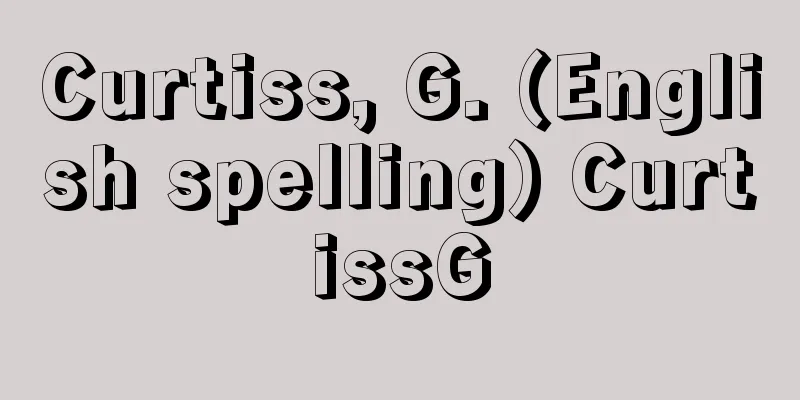Square moat tomb - Hokei Shukobo

|
A type of family (small group) tomb in which the grave is divided into square or rectangular shapes by a ditch and the burial takes place within or within the ditch. It was popular from the end of the early Yayoi period to the early Kofun period, mainly in the Kinki region and eastward. The burial area is often made up of several graves or groups of several graves, and is often connected or arranged in a regular pattern. In the construction of the tombs, emphasis is placed on dividing the ground into flat sections by the ditch, and some have mounds of soil about one meter high, but the emphasis on building burial mounds came later. The planar shapes are rich in variety, with some parts of the ditch left undigged in several places at the four corners. There are burial areas that are periodic and regional, including circular and front-back shaped ones, and multiple shapes may form the same burial area. Burial facilities include direct burial of wooden coffins and pits, and some jar coffins and earthenware coffins are used for children. Most of the grave goods were not found, but a small number of jewels, iron and copper products were excavated. Pottery for funeral ceremonies that were crushed, and pottery for offerings that had been perforated (before or after firing) or chipped off to be turned into ritual vessels have been excavated. Square moated tombs appeared in the Kinki region at the end of the early Yayoi period and spread to the coast of Ise Bay, then rapidly spread eastward from the middle Yayoi period onwards, but had little influence westward. However, in the early Kofun period, they were distributed throughout Japan, from the Tohoku region to southern Kyushu. A similar burial system is the square platform tomb, which is constructed three-dimensionally by shaping the terrain rather than dividing it into sections by ditches on a hill. It emerged in the early Yayoi period and became popular mainly in the Chugoku region from the middle Yayoi period onwards. [Toshihiro Suzuki] Source: Shogakukan Encyclopedia Nipponica About Encyclopedia Nipponica Information | Legend |
|
方形や長方形に墓の周囲を溝で区画し、その内部や溝中に埋葬をする家族(小集団)墓の一形式。弥生(やよい)時代前期末から古墳時代前期に、主として近畿地方以東で盛行した。墓域は、数基あるいはそれが数群で形成され、連結や規則的な配置を示すものが多い。墓の造営では、溝による平面区画に重点が置かれ、高さ1メートル前後の盛り土をもつものもあるが、墳丘構築を重視するのは後出的なものである。平面形態は、四隅の何か所か溝の一部を掘り残すことで、各種のバラエティーに富む。円形や前方後方状のものも含め、時期的、地域的な傾向をもつ墓域と、複数の形態が同一墓域を構成することもある。埋葬施設は、木棺直葬や土壙(どこう)を設け、壺棺(つぼかん)や甕棺(かめかん)も一部で小児用として使用する。副葬品は、大部分からは発見されないが、少数から玉類、鉄・銅製品が出土する。土器は、破砕(はさい)された葬送儀礼用や、穿孔(せんこう)(焼成前または後に施す)や一部を打ち欠いて儀器化した供献(くけん)用が出土する。 方形周溝墓は、弥生時代前期末に近畿地方で発生して伊勢(いせ)湾岸へ及び、中期以降に急速に東方へ伝播(でんぱ)するが、西方への波及は少ない。しかし古墳時代前期には、東北地方から南九州地方までの汎(はん)日本的分布を示す。 類似の墓制に方形台状墓があり、丘陵上で溝による区画よりも、地形整形で立体的に構築するものである。弥生時代前期に発生し、中期以降に中国地方を中心に盛行する。 [鈴木敏弘] 出典 小学館 日本大百科全書(ニッポニカ)日本大百科全書(ニッポニカ)について 情報 | 凡例 |
<<: Square platform tomb - Hokeidaijobo
Recommend
Prolactin-inhibiting factor
…Synthetic LH-RH is widely used in gonadotropin r...
Matsukawa [town] - Matsukawa
A town in Shimoina District in southern Nagano Pre...
Consolato del Mare (English spelling)
A code of maritime law for the Mediterranean regio...
Nuk (English spelling)
...Although there are some mixed-race people of N...
Cartesius, R.
…French philosopher and scientist. His Latin name...
Vernier, P.
...Length measuring instruments that combine a ma...
Ebina Suekane - Ebina Suekane
…A medieval samurai family whose main territory w...
Ibn al‐'Arabī
1165‐1240 Islamic mystic. Born in Murcia in southe...
Sea of Okhotsk - Okhotsk Sea (English spelling)
A marginal sea in the northwest Pacific Ocean, se...
Dioscorea tokoro (English spelling) Dioscoreatokoro
…[Shinichi Suzuki]. … *Some of the terminology ex...
Eld deer - Eld deer
It is a mammalian animal of the order Artiodactyl...
Great black-crowned crane - Great black-crowned crane
A perennial vine in the Asclepiadaceae family (AP...
Oolong tea (Oolong tea) - Oolongcha (English spelling) wū lóng chá
A type of Chinese tea. Also called "qing-cha&...
Merensky reef
...The lower part of the rock mass is ultrabasic,...
Ani
A former town (Ani-machi) in Kitaakita County, no...









